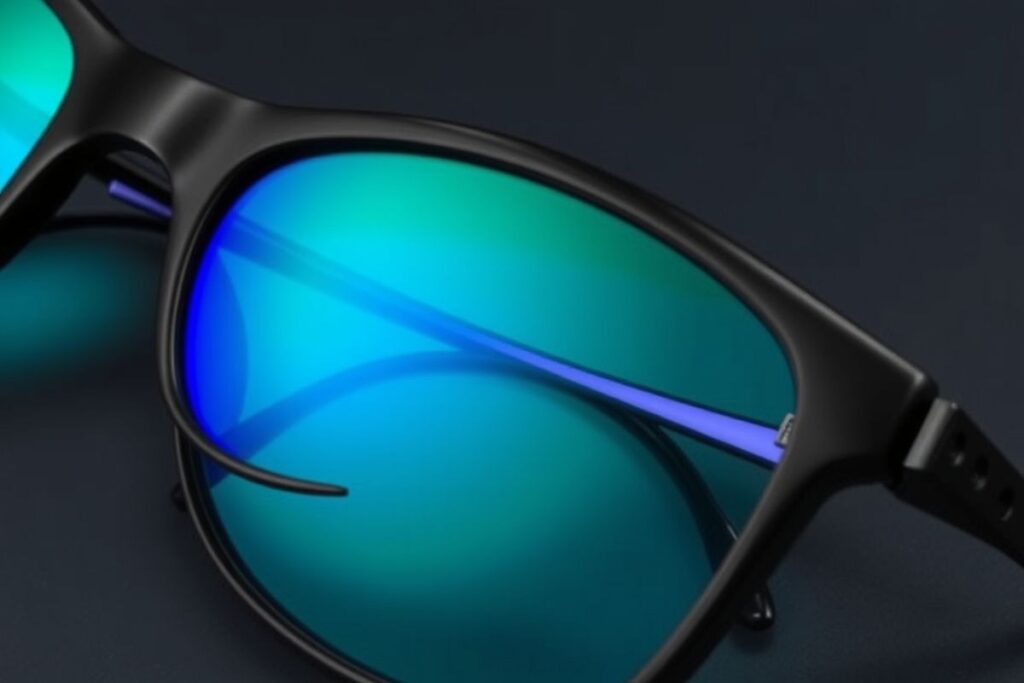The Glare-Free Dilemma: Stunning Visuals or Vibrant Hues?
Choosing a display with an anti-glare coating seems like a no-brainer. Who wants to squint at a screen riddled with distracting reflections? Matte finishes promise a comfortable viewing experience, especially in brightly lit environments. However, this comfort often comes at a cost: color accuracy and vibrancy. This seemingly minor tradeoff can significantly impact your visual experience, particularly if you’re a photographer, graphic designer, or simply someone who appreciates rich, accurate colors. This article delves into the nuances of anti-glare coatings, exploring the benefits and drawbacks of matte finishes, and helping you navigate the delicate balance between glare reduction and color fidelity.

Understanding Anti-Glare Coatings
How They Work
Anti-glare coatings, often referred to as matte finishes, work by diffusing light. Instead of reflecting light directly back at the viewer, the textured surface scatters it in multiple directions. This scattering effect reduces the intensity of reflections, making the screen easier to view in bright conditions. Think of it like frosted glass – the rough surface scatters light, obscuring the view but also reducing glare.
These coatings are typically applied as a thin layer on top of the display. The specific composition and texture of this layer determine the effectiveness of the anti-glare properties and the degree to which colors are affected. Different manufacturers employ various techniques and materials, resulting in varying levels of performance and visual impact.
The tradeoff is that this diffusion also scatters the light emitted by the display itself, leading to a slightly muted appearance. This is why colors on matte screens can appear less vibrant and slightly washed out compared to glossy displays.
The Impact on Color
The diffused light caused by anti-glare coatings affects the perceived color in several ways. Firstly, it reduces the overall brightness and contrast, making colors appear less intense. This effect is often described as a “haze” or “veil” over the image.
Secondly, the scattering of light can lead to a slight shift in color accuracy. Certain wavelengths of light may be scattered more than others, leading to a subtle imbalance in the color spectrum. This can result in colors appearing slightly desaturated or shifted towards a cooler tone.
The degree to which colors are affected varies depending on the quality of the anti-glare coating. High-quality coatings minimize color shift and maintain a reasonable level of vibrancy, while cheaper coatings can significantly dull the display.
Benefits of Anti-Glare
Despite the impact on color, anti-glare coatings offer significant benefits. The primary advantage is reduced eye strain. By minimizing reflections, matte screens create a more comfortable viewing experience, especially during extended use. This is particularly important for those who work long hours in front of a computer.
Another benefit is improved visibility in bright environments. Glossy screens can become almost unusable in direct sunlight or under harsh office lighting. Anti-glare coatings mitigate this issue, making the screen content visible even in challenging lighting conditions.
Finally, matte finishes are less prone to fingerprints and smudges, keeping the screen looking clean and presentable.
Choosing the Right Display
Consider Your Needs
Selecting the right display depends on your priorities and how you intend to use the device. If color accuracy and vibrancy are paramount, a glossy display is the preferred choice. Photographers, graphic designers, and video editors will benefit from the richer color palette offered by glossy screens.
However, if you prioritize comfort and usability in bright environments, an anti-glare display might be a better option. Office workers, students, and casual users who primarily use their devices for browsing, writing, and consuming media may find the reduced glare more beneficial than the slight reduction in color vibrancy.
Consider the lighting conditions in your typical working environment. If you frequently work in brightly lit spaces, the benefits of an anti-glare coating will be more pronounced.
Comparing Different Coatings
Not all anti-glare coatings are created equal. Some manufacturers offer high-quality coatings that minimize the impact on color while effectively reducing glare. These coatings are often found on higher-end displays and laptops.
Cheaper coatings, on the other hand, can significantly dull the display and introduce noticeable color shifts. It’s essential to research and compare different displays before making a purchase. Look for reviews that specifically address the quality of the anti-glare coating.
Comparing displays side-by-side is the best way to assess the impact of the anti-glare coating on color and image quality. Pay attention to the vibrancy of colors, the level of contrast, and the overall clarity of the image.
| Feature | Glossy Display | Matte Display |
|---|---|---|
| Color Vibrancy | High | Reduced |
| Glare Reduction | Low | High |
| Eye Strain | Higher | Lower |
- Consider your usage: Prioritize color or glare reduction?
- Research coatings: Not all matte finishes are equal.
- Compare in person: See the difference firsthand.
Conclusion
The choice between a glossy and matte display is a balancing act between vibrant colors and comfortable viewing. While anti-glare coatings undeniably reduce eye strain and improve visibility in bright environments, they inevitably compromise color vibrancy and accuracy. Ultimately, the ideal display depends on your individual needs and priorities. By carefully weighing the tradeoffs and understanding the nuances of different coatings, you can make an informed decision and choose a display that best suits your workflow and viewing preferences.

Leave a Reply